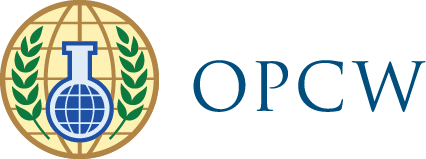The Fires Project is a series of short documentary videos depicting the intersection of people and chemical weapons.
Subtitled in the OPCW’s six official languages, these videos are an effective tool for raising awareness about chemical weapons issues.
Fingerprints in the Mountains
As with human fingerprints, chemicals show unique features, which are used to distinguish them within a sample. Currently, there are over 140 million known chemical substances—a number that grows daily. How do you identify the ones contained in an unknown sample?
Finding and identifying these chemical fingerprints is a detective’s job. The Spiez Laboratory in Switzerland is one of the OPCW’s Designated Laboratories, which play a critical role in the implementation of the Chemical Weapons Convention. Peter is an analytical chemist at the Spiez Laboratory, and his work sometimes has a direct influence on world affairs.
Which side do you belong to?
Irish director Donal Fernandes traces the steps of his two great-uncles killed in action during World War I. At the front, both brothers were exposed to mustard gas. By the end of World War I, mustard claimed more victims than all other chemical agents combined.
Mustard gas is a blistering agent, which causes blisters on any area of contact. Soldiers exposed to mustard sustained severe skin injuries, and could even go blind. Although gas masks were improved to protect the respiratory tract, soldiers could not easily protect the rest of their body during battle.
Combustion Man
Dr Subith Vasu, combustion and fuel researcher at the University of Central Florida (UCF) in the United States investigates what happens to toxic chemicals during explosions. Deadly chemical weapons pose a problem when it comes to destruction.
The results of Dr Vasu’s experiments may help ascertain what kind of explosives may effective in destroying dangerous chemical weapons in the safest and most efficient way possible.
Dr Vasu’s work is a reminder that many researchers aspire to use science to benefit humanity and counter the menace of chemical weapons.
Buried Memories
Directly after the first chlorine gas attack in Ieper, Belgium, the German army deployed the same deadly weapon on the Eastern front in May 1915.
The scale of the attack during the battle at Bolimów, Poland, was unprecedented: almost double the amount of chlorine gas was used in Bolimów than at Ieper, leaving thousands of people dead. A hundred years later, Anna Zalewska, a Polish archaeologist, arrives at the banks of the River Rawka near Bolimów.
To the naked eye, this area’s tragic past seems buried and forgotten. But as Anna identifies the lines of old trenches, she unearths human remains lying just under a thin layer of forest soil. When local people flock to the re-enactment of the historic battle, the past suddenly reveals its gruesome face with the pungent smell of chemical weapons, and the noise and chaos of combat. For Anna, too, her efforts bring the past alive for us in the present: “Archaeology may put an end to certain traumas. What we have to show may be difficult and heartbreaking, but it can enrich us.”
Ich liebe Dich
On 16 March 1988, during the last days of the Iran-Iraq war (1980-1988), Iraqi forces attacked the town of Halabja after it had fallen to the Iranian army and Kurdish guerrillas. Sources mention the use of multiple chemical agents, including mustard gas and nerve agents.
Many victims also died later of cancer and other illnesses which affected the population in the aftermath of the attack. Many still suffer the physical and psychological consequences. Several victims were sent abroad to receive treatment.
Kayvan Mohammad vividly remembers the chemical attack in 1988 and its aftermath. To this day, he is not only scarred emotionally but continues to suffer physically from the events. Kayvan faces his hardship with unfailing optimism and in doing so provides a simple but powerful message.
A Teacher’s Mission
A scientist’s knowledge is a powerful tool, but what is the value of science to humanity without ethics?
Teacher Chrétien Schouteten explores the subject of ethical chemistry with his students. Long before the signature of the Chemical Weapons Convention and the Nobel Peace Prize, Mr Schouteten was already sensitizing his pupils to the issue of ethics and chemistry, challenging them to imagine what they would do if their knowledge were demanded not for noble causes, but for evil purposes.
To address a wider audience on this theme, Schouteten wrote a theatrical play about the life of Fritz Haber, the father of modern chemical warfare who also won the Nobel Prize for inventing the synthesis of ammonia – an invention that enabled the mass production of fertilizers and has fed the world ever since. His enduring aim is to create awareness about the potential misuse of chemistry. A contemporary issue, not buried in the past, but one that engages and affects all.
